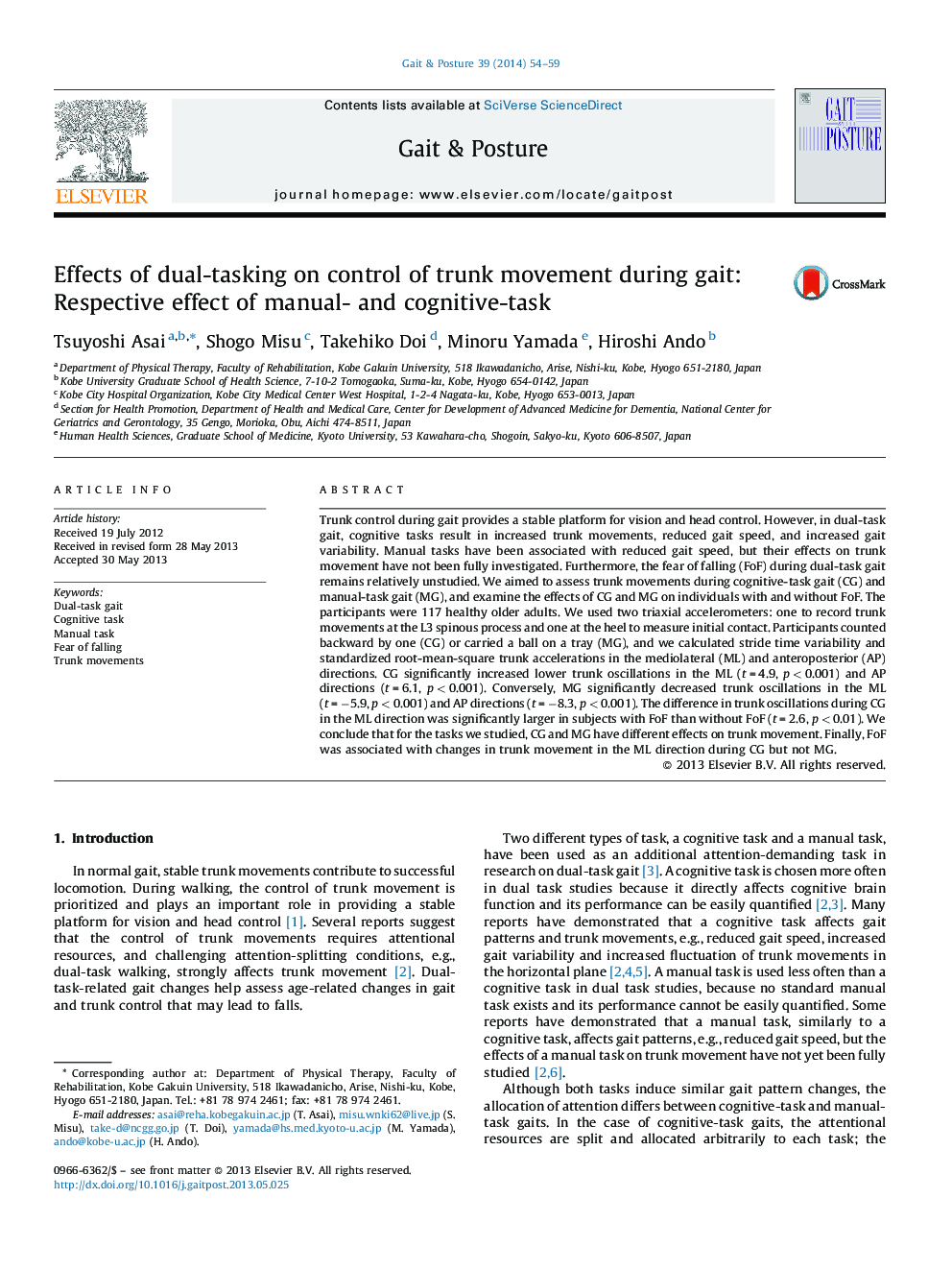| کد مقاله | کد نشریه | سال انتشار | مقاله انگلیسی | نسخه تمام متن |
|---|---|---|---|---|
| 6206897 | 1265653 | 2014 | 6 صفحه PDF | دانلود رایگان |
- Dual-task-related trunk movements depend on the nature of the additional task.
- Dual-task-related gait changes affect trunk movement while walking.
- Fear of falling affects lateral trunk movement in cognitive-task gait.
Trunk control during gait provides a stable platform for vision and head control. However, in dual-task gait, cognitive tasks result in increased trunk movements, reduced gait speed, and increased gait variability. Manual tasks have been associated with reduced gait speed, but their effects on trunk movement have not been fully investigated. Furthermore, the fear of falling (FoF) during dual-task gait remains relatively unstudied. We aimed to assess trunk movements during cognitive-task gait (CG) and manual-task gait (MG), and examine the effects of CG and MG on individuals with and without FoF. The participants were 117 healthy older adults. We used two triaxial accelerometers: one to record trunk movements at the L3 spinous process and one at the heel to measure initial contact. Participants counted backward by one (CG) or carried a ball on a tray (MG), and we calculated stride time variability and standardized root-mean-square trunk accelerations in the mediolateral (ML) and anteroposterior (AP) directions. CG significantly increased lower trunk oscillations in the ML (t = 4.9, p < 0.001) and AP directions (t = 6.1, p < 0.001). Conversely, MG significantly decreased trunk oscillations in the ML (t = â5.9, p < 0.001) and AP directions (t = â8.3, p < 0.001). The difference in trunk oscillations during CG in the ML direction was significantly larger in subjects with FoF than without FoF (t = 2.6, p < 0.01). We conclude that for the tasks we studied, CG and MG have different effects on trunk movement. Finally, FoF was associated with changes in trunk movement in the ML direction during CG but not MG.
Journal: Gait & Posture - Volume 39, Issue 1, January 2014, Pages 54-59
